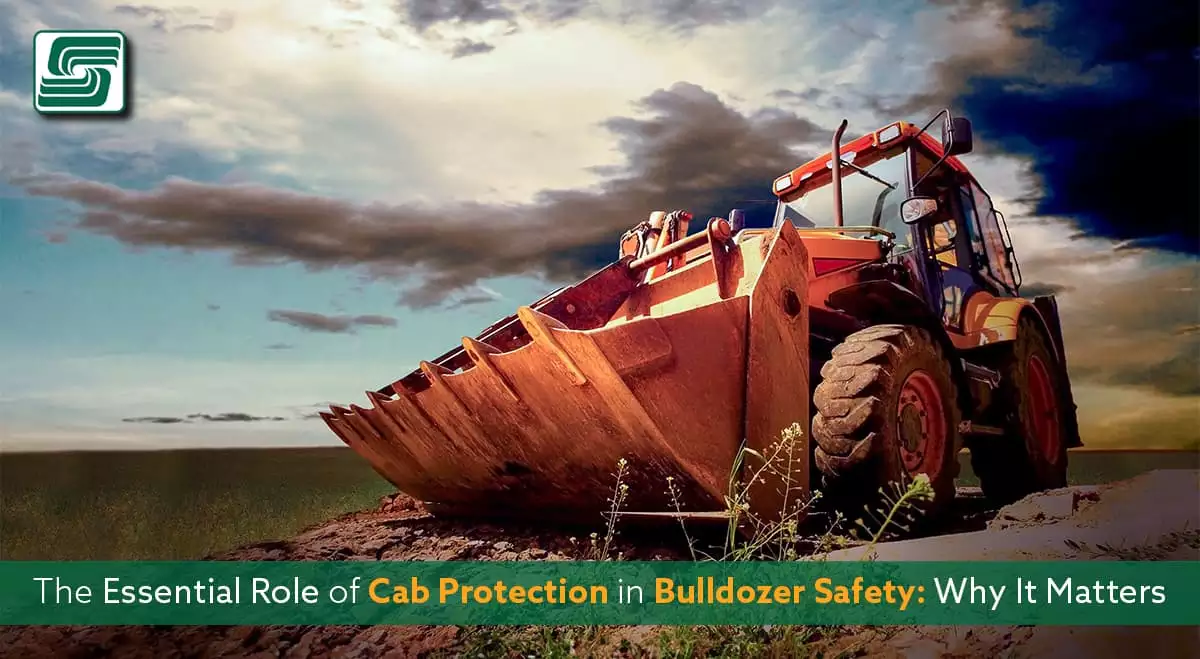
Bulldozers are a significant piece of machinery in the construction and mining industries. They are used to move large amounts of earth and other materials, level terrain, and prepare for construction or mining operations. Operating such heavy equipment has inherent risks that can lead to injuries or fatalities.
Therefore, it is critical to ensure the safety of bulldozer operators. One of the most crucial safety measures for bulldozer operators is cab protection.
Cab protection is essential because it protects operators from hazards they may encounter on the job site. These hazards can include rollovers, falling objects, debris, and contact with hazardous materials.
This article aims to comprehensively understand cab protection in bulldozer safety. We will discuss the different types of cab protection available, their benefits, dangers without them, how to ensure proper cab protection and regulations concerning cab protection.
Bulldozers are Everywhere!
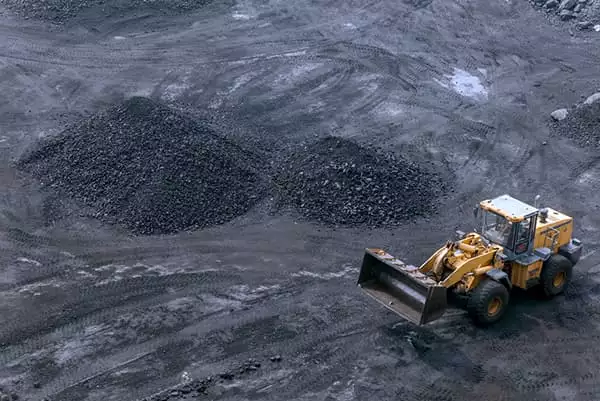 Bulldozers are heavy-duty machines that play a critical role worldwide in the construction and mining industries. They have a flat blade at the front that can be moved up or down hydraulically to push dirt or other materials around as needed. Some models also have a ripper that attaches to their back end, which helps break up hard soil or rock.
Bulldozers are heavy-duty machines that play a critical role worldwide in the construction and mining industries. They have a flat blade at the front that can be moved up or down hydraulically to push dirt or other materials around as needed. Some models also have a ripper that attaches to their back end, which helps break up hard soil or rock.
The importance of bulldozers stems from their ability to quickly complete tasks that would otherwise take much longer using manual labor or less powerful machinery. They make it easy for large-scale projects such as building highways, leveling land for residential areas or commercial buildings, and excavating mines.
Importance of Cab Protection in Bulldozer Safety
Cab protection plays an essential role in ensuring the safety of bulldozer operators. Cab protection aims to provide operators with a safe and secure environment while on the job. It protects them from various hazards they may encounter while operating the bulldozer.
Cab protection can come in different forms, such as Rollover Protective Structures (ROPS), Falling Object Protective Structures (FOPS), or Operator Protective Structures (OPS). These structures are designed to prevent objects from falling on the operator and protect their head and body in case of rollovers, among other hazards.
What is Cab Protection?
Cab protection refers to installing safety structures on a bulldozer to protect the operator in the event of an accident. These structures are designed to provide a barrier between the operator and external hazards such as falling objects, rollovers, or contact with hazardous materials. The importance of cab protection cannot be overstated.
Without it, operators would be at risk of serious injury or death from any number of accidents that could occur on a construction site or mine. Proper cab protection can reduce the risk of injury or death and improve productivity by reducing downtime from accidents.
Types of Cab Protection
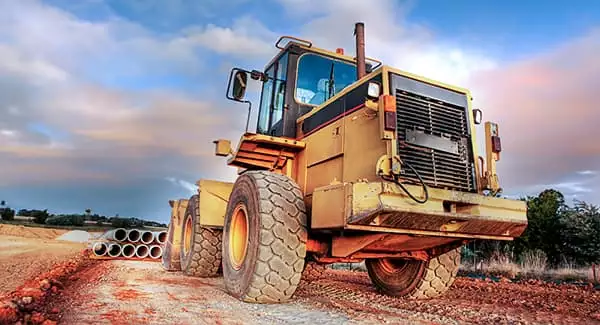 There are three primary types of cab protection: Rollover Protective Structures (ROPS), Falling Object Protective Structures (FOPS), and Operator Protective Structures (OPS). ROPS are designed to protect the operator if a bulldozer rolls over. They consist of a reinforced frame that surrounds the operator's compartment and provides a protective barrier if the machine tips over.
There are three primary types of cab protection: Rollover Protective Structures (ROPS), Falling Object Protective Structures (FOPS), and Operator Protective Structures (OPS). ROPS are designed to protect the operator if a bulldozer rolls over. They consist of a reinforced frame that surrounds the operator's compartment and provides a protective barrier if the machine tips over.
FOPS are designed to protect against falling objects such as rocks, debris, or tree branches that could fall onto the bulldozer and injure or kill the operator. This type of cab protection is especially important for operations that involve clearing trees or other obstacles.
OPS protects operators from contact with hazardous materials such as chemicals, dust, or radiation. These structures may include sealed cabins with air filtration systems to prevent exposure to harmful particles and gases.
Roles of Each Type of Protection
Each type of cab protection plays an important role in ensuring operator safety on a bulldozer. ROPS protects against one common accident scenario - rollovers - because of uneven terrain, steep slopes, or other factors beyond an operator's control. FOPS are particularly critical for jobs involving heavy machinery around trees, rocks, or other objects.
Without FOPS, operators would risk serious head injuries from falling debris. OPS protects operators from long-term health hazards associated with contact with hazardous materials.
Operators could suffer respiratory issues, skin damage, or other chronic health problems without proper protection. Overall, the combination of ROPS, FOPS, and OPS provides comprehensive cab protection that helps keep bulldozer operators safe on job sites.
The Dangers Without Cab Protection
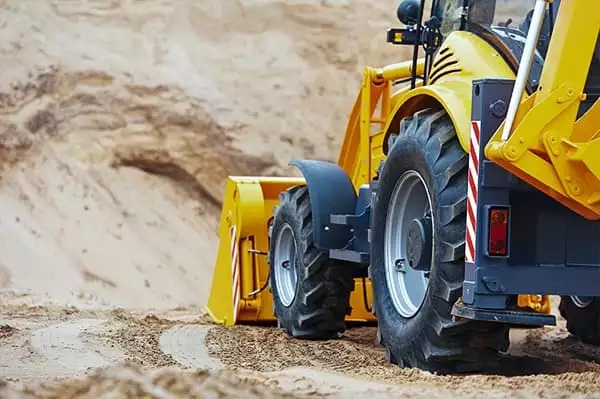 Bulldozers are heavy pieces of machinery used extensively in the construction and mining industries. Their massive size and weight can cause severe damage to both property and human life if proper safety measures are not followed. One of the most critical safety features is cab protection.
Bulldozers are heavy pieces of machinery used extensively in the construction and mining industries. Their massive size and weight can cause severe damage to both property and human life if proper safety measures are not followed. One of the most critical safety features is cab protection.
Cab protection refers to protective structures that shield bulldozer operators from various hazards during operation. Bulldozer operators face numerous risks that can result in serious injury or death without cab protection.
Statistics reveal that accidents involving bulldozers without cab protection are a common occurrence. Between 2000 and 2010, there were approximately 130 fatalities resulting from accidents involving bulldozers without Rollover Protective Structures (ROPS) in the United States alone.
Risks to operators primarily come from rollovers and tip-overs when operating on uneven ground or slopes. These incidents can occur suddenly, leaving no time for the operator to react adequately.
Sometimes, the machine may flip over entirely, especially when operating on steep slopes or unstable terrain.
Falling objects and debris pose another significant threat to operators working without cab protection.
Construction sites often have loose materials, which can slip off equipment or structures onto an unprotected operator below, causing severe injuries. Contact with hazardous materials is yet another risk for operators without adequate cab protection.
Bulldozer cabs provide a barrier between the operator and potential dangers such as chemicals or other hazardous substances. Without this barrier in place, operators could be exposed to harmful substances by touching them while operating machinery or inhaling them because of a lack of ventilation.
Proper cab protection is crucial for bulldozer operator safety when working on construction sites or other locations where heavy machinery is used routinely. The next section will cover why having appropriate protective structures such as ROPS and FOPS is essential for preventing accidents and reducing the risk of injuries.
The Benefits of Cab Protection
Improved Operator Safety and Well-being
Cab protection is essential for the safety and well-being of bulldozer operators. The enclosed cab protects from harsh weather conditions, dust, and other environmental factors affecting the operator's health.
In addition, the cab protects operators from noise pollution that can cause hearing loss over time. The Rollover Protective Structures (ROPS) installed in a bulldozer's cab protect operators during rollover accidents.
ROPS standards ensure that a bulldozer's cab provides adequate protection to prevent crushing or serious injury to the operator in case of a rollover. This safety feature gives peace of mind to operators who work under hazardous conditions.
The Safety Barrier
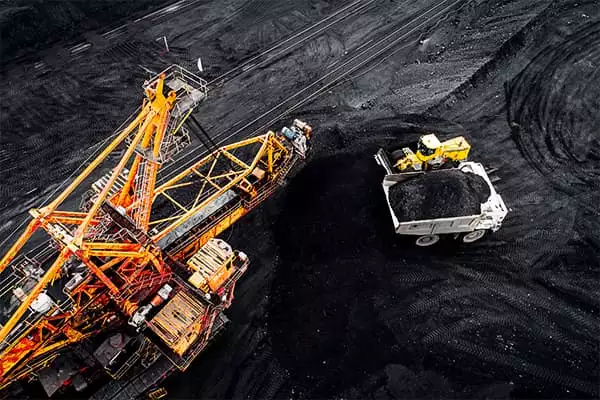 Cab protection reduces the risk of injury or death from accidents involving bulldozers. Operators risk being crushed by falling objects such as rocks and bricks without proper cab protection. They may also come into contact with hazardous materials like chemicals and waste material, which can cause severe health problems.
Cab protection reduces the risk of injury or death from accidents involving bulldozers. Operators risk being crushed by falling objects such as rocks and bricks without proper cab protection. They may also come into contact with hazardous materials like chemicals and waste material, which can cause severe health problems.
Rollovers are one of the leading causes of fatal accidents for bulldozer operators. Cab protection ensures that in case of a rollover, the operator will have enough space between them and the ground so their own machine won't crush them.
Increasing Production by Not Dying!
Cab protection ensures operator safety and increases productivity by reducing downtime from accidents. Accidents without proper cab protection often result in severe injuries or fatalities, which require significant downtime for investigation, cleanup, repairs, and retraining new staff.
With protected cabs that increase operator safety, there is less likelihood of machine failure because of human error during operation. Workers feel safer and more secure using them, leading to reduced time lost for repairs or maintenance, allowing projects to stay on schedule and, ultimately, increasing productivity.
How to Ensure Proper Cab Protection
Ensuring proper cab protection is crucial for the safety of bulldozer operators. The following are some of the measures that must be taken to guarantee adequate cab protection:
Regulations for cab protection in different countries
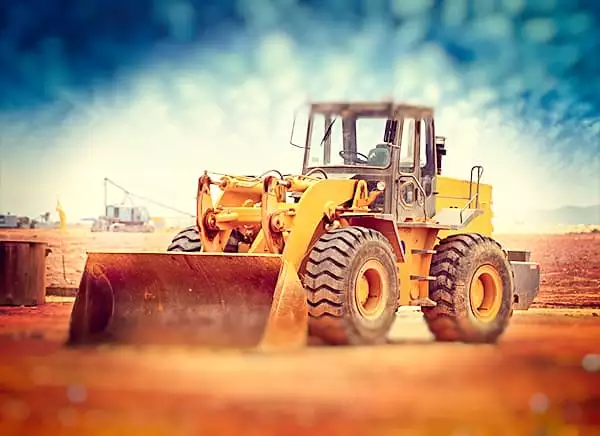 Different countries have different regulations regarding cab protection in bulldozers. For example, in the United States, the Occupational Safety and Health Administration (OSHA) requires all earthmoving equipment to have Rollover Protective Structures (ROPS) and Falling Object Protective Structures (FOPS).
Different countries have different regulations regarding cab protection in bulldozers. For example, in the United States, the Occupational Safety and Health Administration (OSHA) requires all earthmoving equipment to have Rollover Protective Structures (ROPS) and Falling Object Protective Structures (FOPS).
In Australia, there are regulations set by Safe Work Australia on how ROPS, FOPS, and Operator Protective Structures (OPS) should be installed, designed, or tested. Failure to follow these regulations can result in operator and employer penalties.
It is important to note that it's imperative to comply with regulatory requirements and exceed them whenever possible. Employers should prioritize investing in better-quality cabs with improved protective structures that surpass basic compliance requirements.
Certification standards for ROPS, FOPS, and OPS
ROPS, FOPS, and OPS must be certified by national or international organizations to verify their effectiveness and compliance with industry standards. In the United States, these certifications come from organizations like the Society of Automotive Engineers (SAE) or the American National Standards Institute (ANSI). In Europe, certifications are provided by organizations like European Committee for Standardization (CEN).
Certification ensures structures meet minimum safety requirements established through rigorous testing procedures that simulate real-world conditions. It's a strong indicator of quality assurance as it offers the assurance of structural reliability under high-stress conditions.
Regular inspections and maintenance
Employers should ensure that cabs receive regular inspections performed by professionals trained in assessing structural integrity regularly throughout their lifespan. Regular inspections help identify any damage early enough before they become a safety hazard to operators. Additionally, regular maintenance of cabs is crucial in ensuring their effectiveness.
Employers should establish effective maintenance programs that include the inspection of bolts, welds, and other structural components. Proper maintenance ensures that equipment remains fit for use and detects any potential defects before they can put operators at risk.
In Sum
Bulldozers are essential in construction and mining, but their operators work in hazardous environments. Cab protection is crucial in bulldozer safety, preventing injuries or death caused by rollovers, falling objects, and other hazards.
Rollover protective structures (ROPS), falling object protective structures (FOPS), and operator protective structures (OPS) are the most common types of cab protection that can safeguard bulldozer operators. Without cab protection, operators face serious dangers in the workplace.
Accidents involving bulldozers without cab protection have led to fatalities and serious injuries. The risks to operators without cab protection include rollovers and tip-overs, falling objects and debris, and contact with hazardous materials.
Cab protection regulations differ from country to country, yet they ensure proper cab protection. The benefits of having proper cab protection for bulldozer operators cannot be overstated.
Improved operator safety and well-being translate into fewer accidents or injuries on the job site. In turn, less downtime due to accidents leads to increased productivity levels.
Proper certification standards for ROPS, FOPS, and OPS must be followed while conducting regular inspections and maintenance checks on bulldozers. Cab Protection is an essential component of bulldozer safety that cannot be overlooked or ignored.
The use of ROPS, FOPS, and OPS goes a long way in protecting the lives of Bulldozer Operators from being cut short by accidents at work sites. With proper attention being given to ensuring that certifications are followed, regular maintenance checks are conducted as well, and strict adherence to regulations regarding Cab Protection, the workforce can operate safely with confidence, knowing that their lives are protected from harm's way while going about their duties diligently at construction or mining sites worldwide.